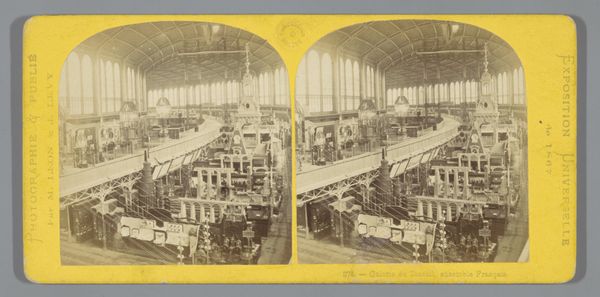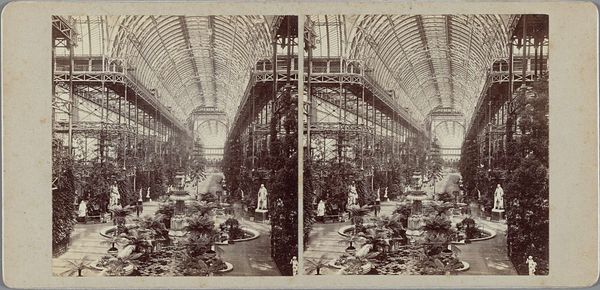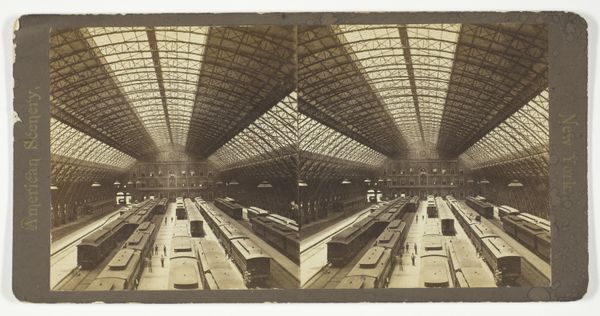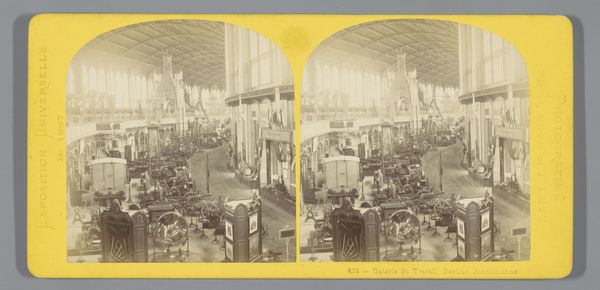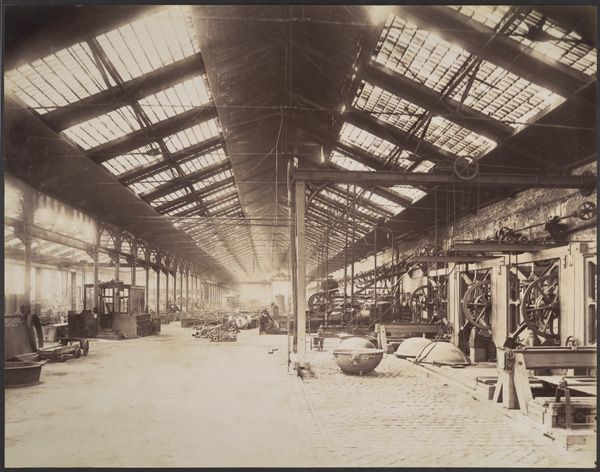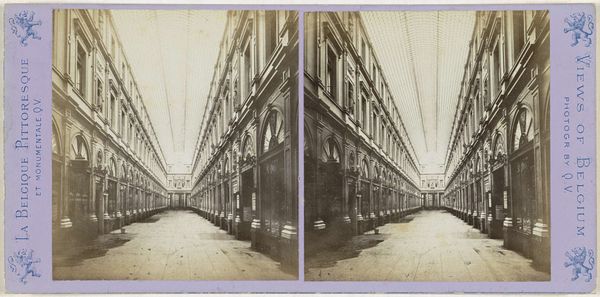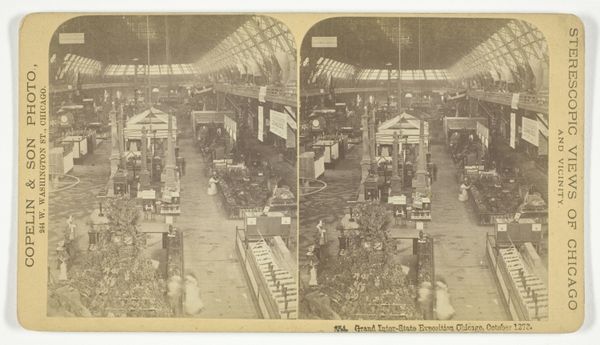
Interieur van het hoofdgebouw van de Wereldtentoonstelling te Philadelphia in 1876 1876
0:00
0:00
photography
#
still-life-photography
#
toned paper
#
impressionism
#
landscape
#
photography
Dimensions: height 106 mm, width 177 mm
Copyright: Rijks Museum: Open Domain
Curator: This is a photographic image taken in 1876 by the Centennial Photographic Company titled, "Interieur van het hoofdgebouw van de Wereldtentoonstelling te Philadelphia in 1876" or "Interior of the Main Building of the World's Fair in Philadelphia in 1876." Editor: It looks immense! So much on display and such detail. I’m immediately drawn to the architecture itself - all that iron and glass. It suggests industry, progress, a monumental effort of production. Curator: Absolutely. This photograph provides valuable documentation of the Centennial Exposition, revealing not only what objects were on display, but also the industrial context that made such massive exhibitions possible. The structure itself becomes a showcase of innovative materials and methods. Editor: Indeed. One begins to ponder the social ramifications. Who fabricated this structure? Were labor practices ethical? What was the environmental impact? Also, looking at what is displayed on these tables... were these goods affordable or just for show? Curator: The fair intended to highlight technological and industrial achievements. Think of it: these international expositions encouraged mass production and global trade, and in turn, dramatically altered the labor market and patterns of consumption. Editor: This single photograph holds such a concentration of complex political and economic themes relevant in our current discussions of global economies and displays. What an impressive commentary! Curator: Precisely. It demonstrates the ambition and the potential for human connection—alongside inherent contradictions about accessibility and inequality of production and wealth in that era. The politics of imagery were really crucial here, with this particular view highlighting modernity through progress. Editor: I came into this imagining industry, but now seeing a reflection of ourselves today. I am intrigued by the enduring relevance. Curator: Right! Through careful attention to material processes and social contexts, we’re provided with much richer insight and can continue this discussion.
Comments
No comments
Be the first to comment and join the conversation on the ultimate creative platform.
